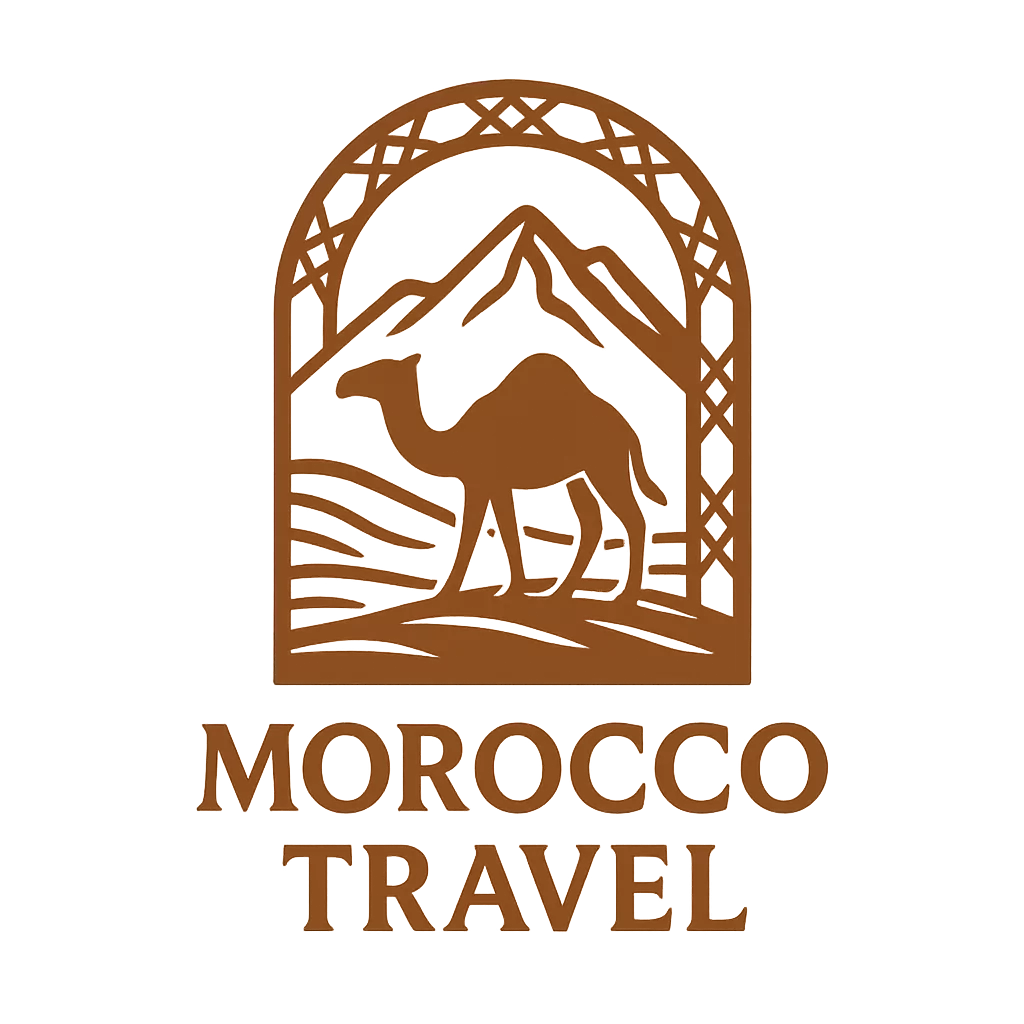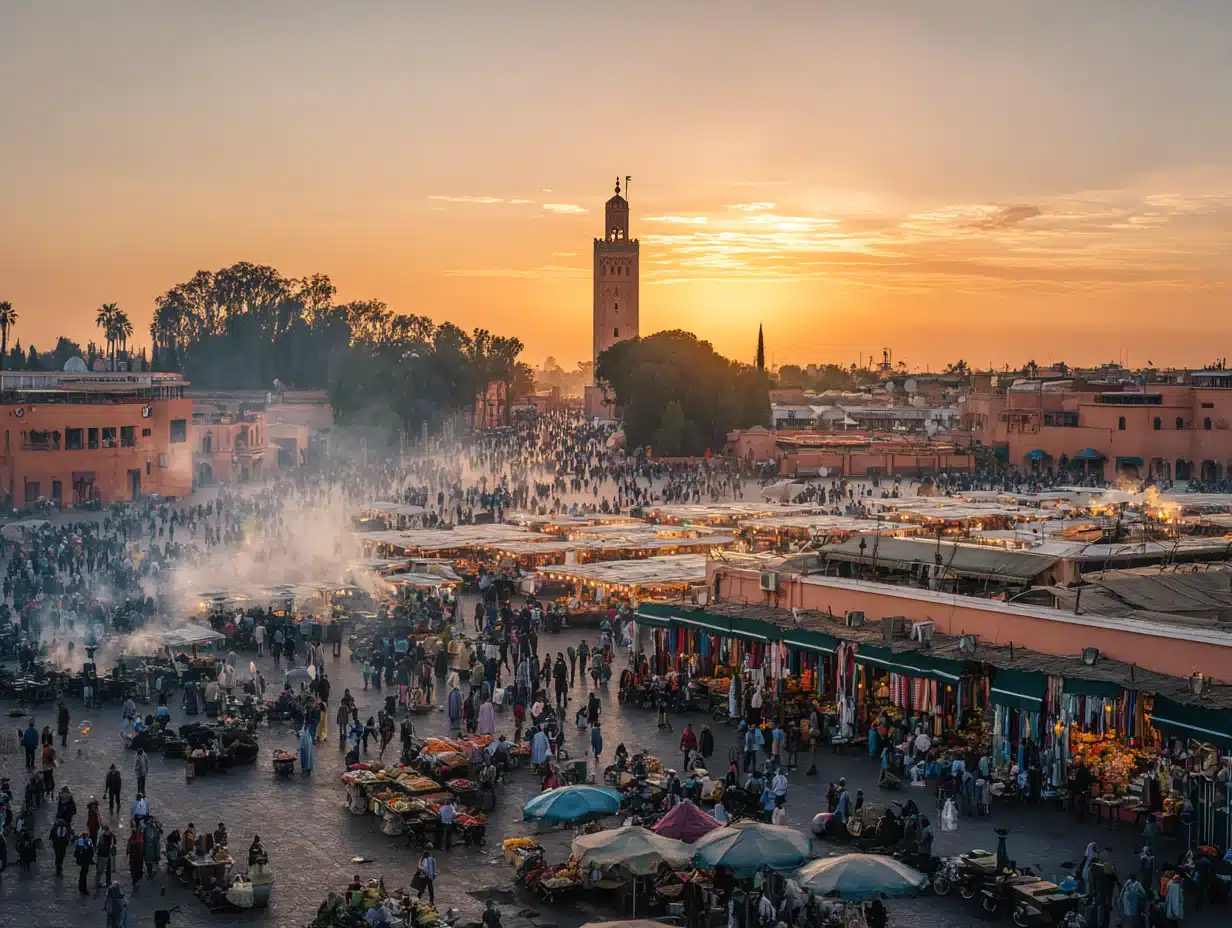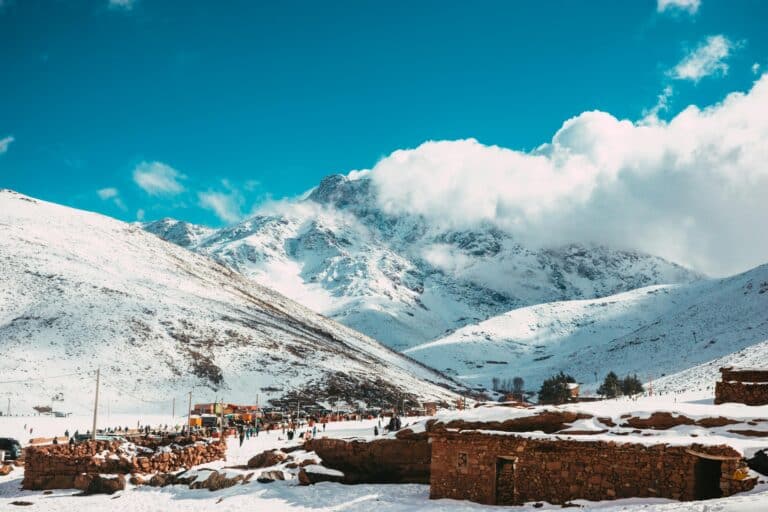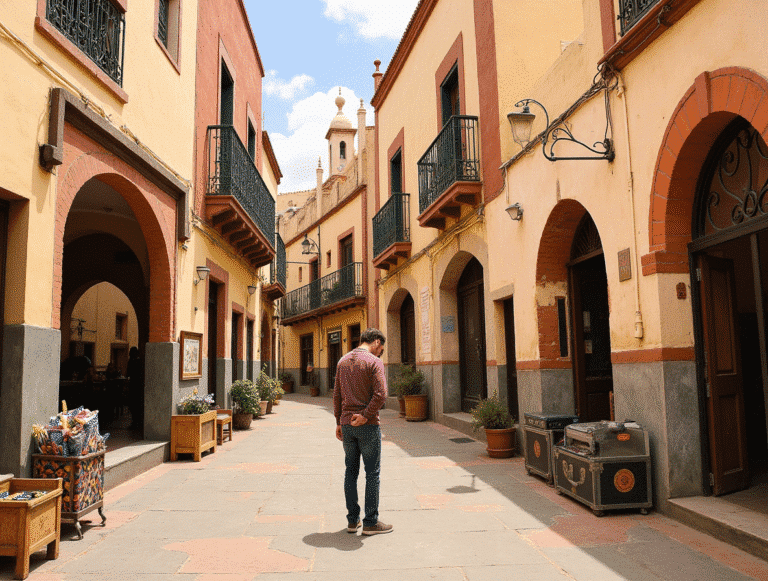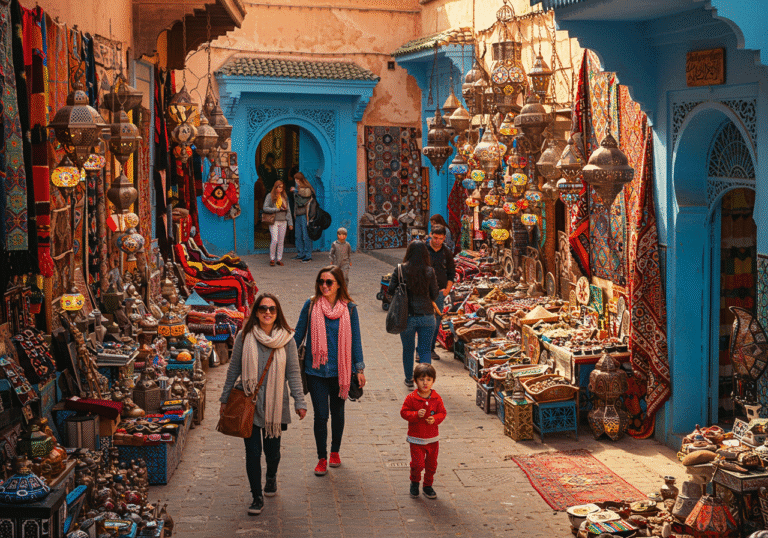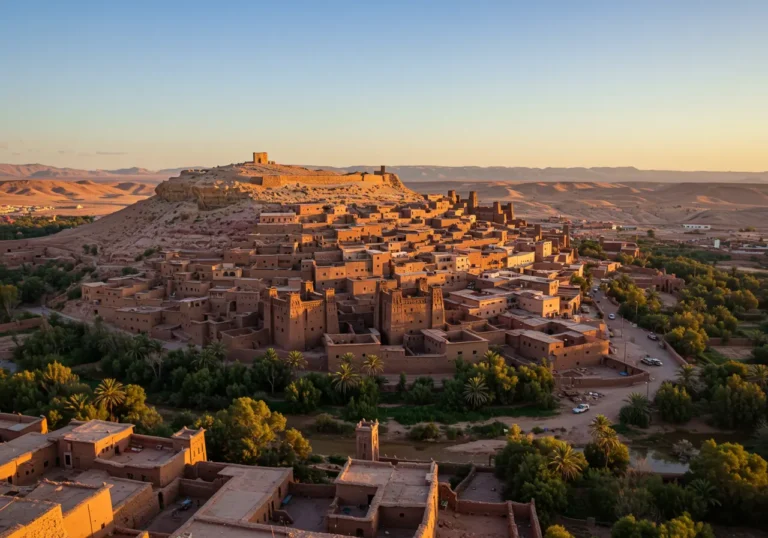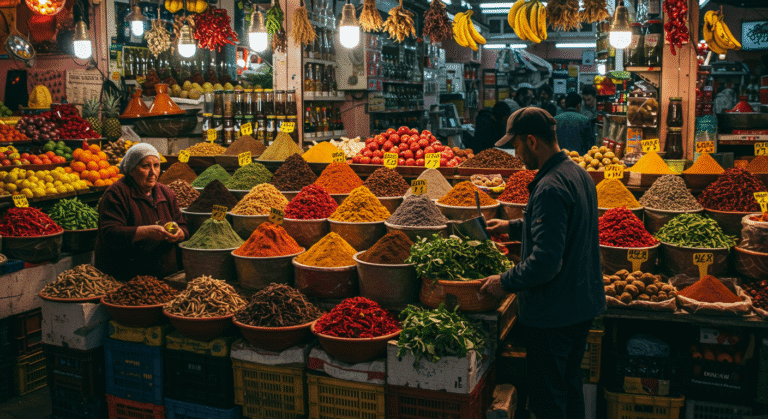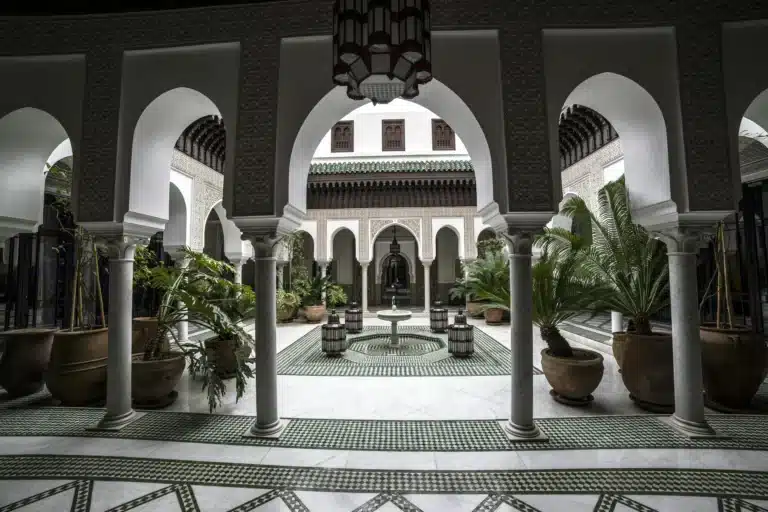Marrakech Bucket List: 15 Epic Experiences to Love in 2025
Introduction
If you’re planning a trip to Morocco’s Red City, this Marrakech bucket list is your ultimate guide to the top experiences you can’t miss. From wandering the bustling souks to soaking in the colors of Jardin Majorelle, Marrakech blends centuries of history with vibrant modern energy. Whether you’re a solo traveler, a luxury seeker, or an adventure lover, this curated list covers Marrakech’s must-see attractions, hidden gems, and even day trips to the Atlas Mountains and Agafay Desert. Here’s everything you need to make your Marrakech itinerary unforgettable in 2025.
What to Expect in Marrakech in 2025
Marrakech in 2025 is more vibrant than ever, a city where tradition and modernity meet at every turn. Nicknamed the Red City for its terracotta-hued walls, Marrakech continues to captivate travelers with its sensory overload: the scent of spices in bustling souks, the call to prayer echoing from minarets, and the kaleidoscope of colors in its palaces and gardens.
What makes Marrakech special today is how it has evolved while holding onto its roots. The medina, a UNESCO World Heritage site, still feels like stepping back in time, yet the city also boasts world-class boutique hotels, chic rooftop bars, and curated cultural experiences designed for modern explorers.
In 2025, Marrakech is also leaning into sustainable tourism. Many riads are eco-friendly, hammams have integrated organic products, and several day trips now emphasize community-based travel, allowing visitors to support Berber villages directly. Whether you’re here for luxury or authenticity, Marrakech offers both—often in the same moment.
Expect a city that’s:
- Timeless yet modern – ancient medina streets alongside stylish cafes.
- Energetic and immersive – ideal for travelers who want to feel, taste, and see everything.
- Gateway to adventure – just an hour or two from mountains, valleys, and desert escapes.
Best Time to Visit Marrakech
Marrakech is a year-round destination, but the best time to visit depends on the type of experience you’re looking for. With its semi-arid climate, the city enjoys plenty of sunshine but can swing between scorching summers and crisp winter nights.
Spring (March – May)
- Why go: This is the sweet spot for most travelers. The weather is warm but comfortable, with daytime temperatures around 22–28°C (72–82°F).
- What to expect: Blooming gardens like Jardin Majorelle are at their most colorful, and rooftop dining becomes especially pleasant.
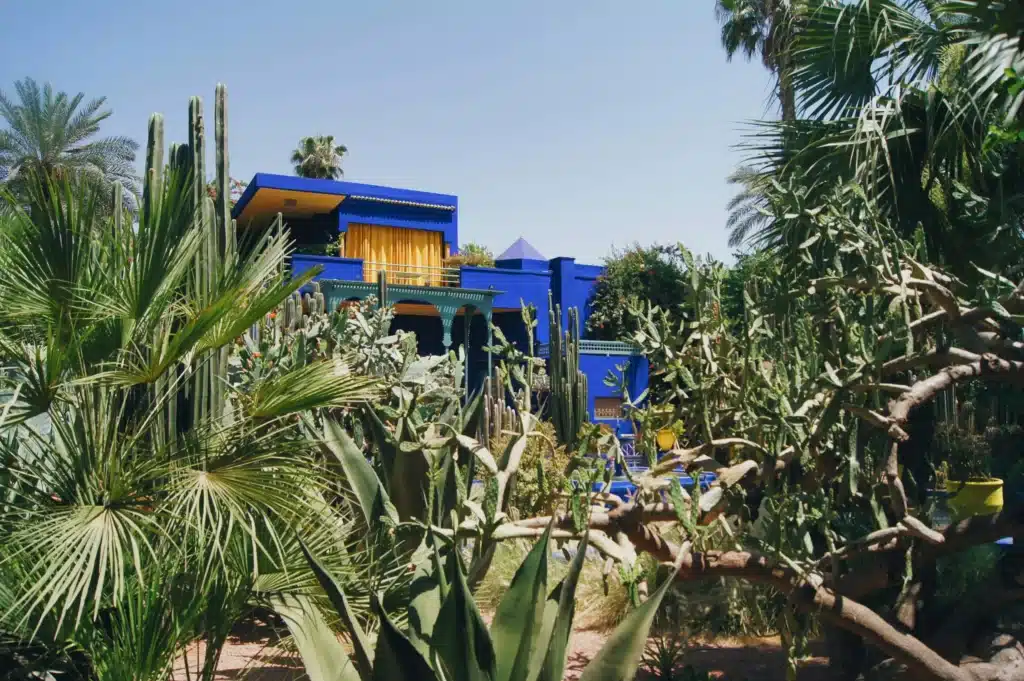
Autumn (September – November)
- Why go: Another traveler favorite, autumn brings cooler evenings and golden light that makes the medina even more photogenic.
- What to expect: Ideal for outdoor adventures like hiking in the Atlas Mountains or taking a day trip to the Agafay Desert without battling extreme heat.
Summer (June – August)
- Why go: Fewer crowds and better deals on luxury riads.
- What to expect: Be ready for heat—temperatures can soar past 40°C (104°F). Early mornings and late evenings are the best times to explore, while afternoons are perfect for hammam visits or cooling off in a courtyard pool.
Winter (December – February)
- Why go: Mild daytime temperatures (15–20°C / 59–68°F) and fewer tourists.
- What to expect: Nights get chilly, especially in January, so pack a warm layer. Winter is also an excellent season for a day trip to the Atlas Mountains, where you might even catch snow.
Travel Tip: If your goal is to experience the Jemaa el-Fnaa night market at its most lively, spring and autumn evenings provide the best balance of comfort and atmosphere.
Essential Local Tips & Cultural Etiquette
Marrakech can feel like a whirlwind to first-time visitors. The medina is a maze, the souks buzz with energy, and daily life follows traditions that go back centuries. To make your journey smoother—and more authentic—keep these cultural insights in mind.
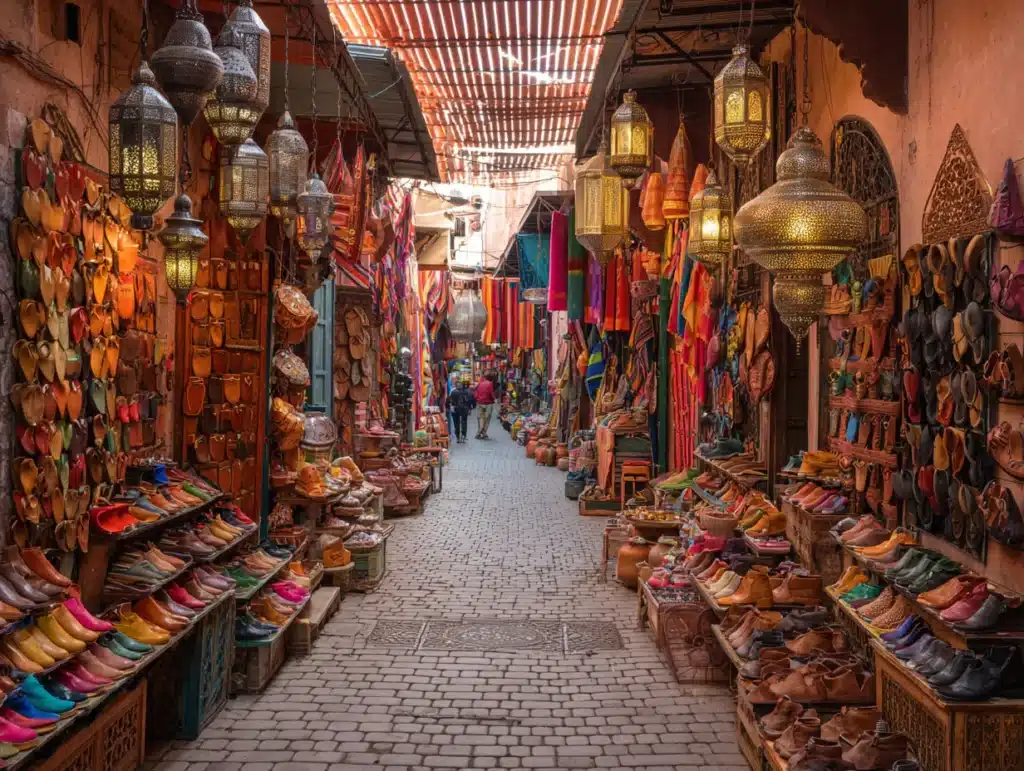
How to Haggle in the Souks
- Start with half the asking price: Vendors usually expect negotiation, so don’t accept the first offer.
- Keep it friendly: Smiling and showing interest goes a long way. Think of it as a playful exchange, not a battle.
- Know when to walk away: If the price isn’t right, a polite “thank you” (shukran) and a step back often brings a better offer.
Hammam Traditions & Etiquette
A traditional hammam experience in Marrakech is a must-do. Think of it as part sauna, part deep cleanse, and part cultural ritual.
- Bring essentials: A bathing suit (optional in traditional hammams, required in tourist-friendly ones), flip-flops, and a small towel.
- Expect layers of cleansing: From black soap scrubs to exfoliation with a kessa glove.
- Relax into the rhythm: Locals often spend hours in hammams, chatting, resting, and sipping mint tea afterward.
Respectful Dress & Behavior
- Dress modestly: Especially in the medina—cover shoulders and knees. Light, breathable fabrics work best.
- Ask before taking photos: Particularly of people, stalls, or performers in Jemaa el-Fnaa.
- Politeness matters: A simple salaam alaikum (peace be upon you) goes a long way.
Navigating the Medina
- Google Maps isn’t always reliable: Streets are too narrow for cars and GPS can be patchy.
- Follow landmarks: Use minarets, riads, or souks as navigation points.
- Beware of unsolicited guides: If someone insists on leading you somewhere, politely decline unless it’s a licensed guide.
Insider Tip: Even luxury travelers should spend at least one evening getting “lost” in the souks—it’s part of the Marrakech magic.
Must-See Attractions & Hidden Gems
Marrakech is overflowing with sights that dazzle every sense. From the iconic Jemaa el-Fnaa to tucked-away courtyards, this is where the city truly comes alive.
Jemaa el-Fnaa Night Experience
At the center of the medina lies Jemaa el-Fnaa, Marrakech’s legendary square and marketplace. By day, it’s a hub of snake charmers and fresh juice stalls; by night, it transforms into a carnival of food vendors, storytellers, and musicians.
- Best time to go: Arrive at sunset to watch the square shift from day to night.
- Don’t miss: A steaming plate of grilled meats at a food stall, followed by a seat at a rooftop café overlooking the chaos below.
Jardin Majorelle & Yves Saint Laurent Museum
A serene escape from the medina, Jardin Majorelle is a lush botanical garden designed by French painter Jacques Majorelle, later restored by Yves Saint Laurent.
- Visiting time: Arrive early morning to beat the crowds.
- Tip: Pair your visit with the Yves Saint Laurent Museum next door for a dose of fashion history.
Bahia Palace & Saadian Tombs
Step back into Marrakech’s regal past with two architectural masterpieces:
- Bahia Palace: Known for its intricate tilework and tranquil courtyards.
- Saadian Tombs: Dating back to the 16th century, hidden for centuries until rediscovered in 1917.
Secret Riads & Rooftop Terraces
Beyond the well-known attractions, some of Marrakech’s best moments happen in quieter spaces:
- Hidden riads: Many open their doors to visitors for lunch or tea, offering a glimpse into traditional Moroccan design.
- Rooftop terraces: Perfect for sunset views over the medina, often paired with mint tea or cocktails.
Other Gems for Your Marrakech Itinerary
- Le Jardin Secret: A restored 19th-century palace garden that feels like an oasis in the medina.
- Mellah (Jewish Quarter): Less visited, but rich in history and character.
- Dar Si Said Museum: A showcase of Moroccan arts and crafts housed in a historic mansion.
Insider Tip: Alternate between high-energy sights (like Jemaa el-Fnaa) and calming escapes (like Jardin Majorelle) to balance your Marrakech experience.
Day Trips from Marrakech
One of the best things about Marrakech is its location: within just a couple of hours, you can find yourself in snow-capped mountains, desert landscapes, or lush valleys. These day trips add depth to your Marrakech itinerary and balance the city’s intensity with nature and adventure.
Atlas Mountains & Berber Villages
Just 1–2 hours from Marrakech, the Atlas Mountains offer crisp air, panoramic views, and authentic cultural encounters.
- Highlights:
- Hike or take a mule ride through villages like Imlil.
- Enjoy mint tea with a Berber family for a genuine cultural experience.
- In winter, Oukaimeden becomes Morocco’s ski resort.
- Travel Tip: Pack layers—it’s significantly cooler than Marrakech.
Agafay Desert Adventures
If you dream of desert vibes but don’t have time for the Sahara, the Agafay Desert is your answer. Located just 45 minutes from Marrakech, it’s a stony desert with golden, moon-like landscapes.
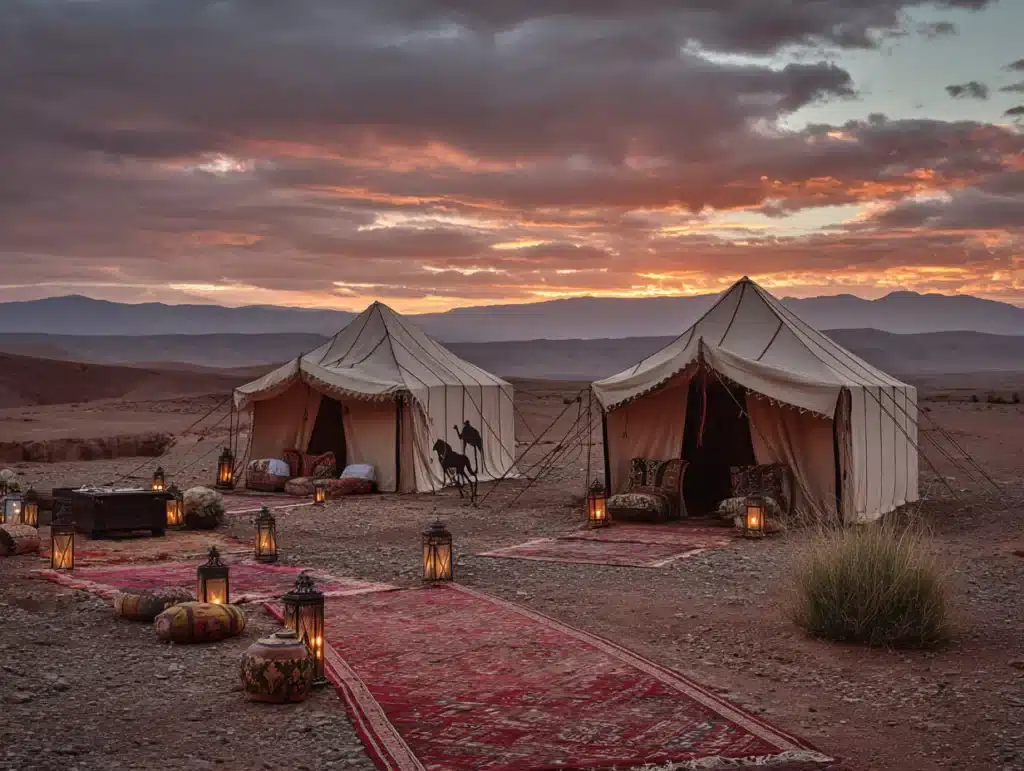
- Experiences to try:
- Camel rides at sunset.
- Luxury desert camps with firelit dinners under the stars.
- Quad biking or horseback riding across the rocky plains.
- Why go: Unlike the Sahara, you don’t need days of travel to enjoy the magic of the desert.
Ourika Valley Escapes
A refreshing contrast to Marrakech’s dry climate, the Ourika Valley lies at the foot of the Atlas Mountains.
- Highlights:
- Hike to waterfalls near Setti Fatma.
- Explore traditional Berber markets.
- Enjoy riverside tagine lunches in rustic cafés.
- Best time: Spring, when wildflowers blanket the valley.
Other Notable Day Trips
- Essaouira (2.5–3 hours): A coastal town with relaxed vibes, fresh seafood, and blue-shuttered architecture.
- Ouzoud Waterfalls (3 hours): One of North Africa’s highest waterfalls, where you might spot playful monkeys.
Insider Tip: Many luxury riads and hotels in Marrakech can arrange private drivers for these day trips, making them seamless additions to your itinerary.
Transportation & Accommodation Guide
Getting around Marrakech and choosing the right place to stay can make or break your trip. Here’s how to navigate both with ease.
Getting Around Marrakech
- Walking: The medina is best explored on foot. Its narrow lanes are pedestrian-friendly, but expect to share space with mopeds and donkeys.
- Taxis:
- Petit taxis (small, beige cars) are for short rides within the city. Always ask drivers to use the meter.
- Grand taxis cover longer distances, including airport transfers or trips outside Marrakech.
- Calèches (Horse-Drawn Carriages): A charming, if touristy, way to ride around the city walls.
- Private Drivers & Transfers: Many riads and hotels can arrange chauffeured cars, ideal for day trips.
Where to Stay in Marrakech
The real Marrakech experience lies in its riads—traditional Moroccan houses with inner courtyards turned boutique hotels. Luxury travelers and adventurers alike can find a riad that suits their style.
Best Riad Recommendations
- Riad Yasmine: Famous for its emerald-tiled pool and Instagram-worthy courtyard.
- La Mamounia: An opulent palace hotel blending Moroccan artistry with modern luxury—Winston Churchill once called it “the most lovely spot in the world.”
- Riad Be Marrakech: Cozy and colorful, perfect for solo travelers who want a welcoming, family-run atmosphere.
- El Fenn: A luxury riad-meets-art-gallery, known for eclectic design and rooftop views.
Why Choose a Riad Over a Hotel?
- Personalized hospitality—owners often welcome guests with mint tea.
- Central medina locations that keep you close to the action.
- Intimate, atmospheric settings you won’t find in chain hotels.
Insider Tip: Book riads early, especially in spring and autumn, when demand peaks. Many only have a handful of rooms.
What to Pack & How to Prepare
Marrakech is a city of contrasts: hot days and cool nights, lively souks and serene gardens, modern comforts and age-old traditions. Packing smart ensures you’re comfortable, respectful, and ready for adventure.
Clothing Essentials
- Modest, breathable outfits: Lightweight cotton or linen to stay cool while covering shoulders and knees in the medina.
- Layering pieces: A light sweater or jacket for cooler nights, especially in winter or during desert trips.
- Comfortable walking shoes: Essential for navigating cobblestone alleys and souks.
- Swimwear: For hammams, riad pools, or luxury hotels (more common in tourist areas).
Practical Travel Gear
- Power adapter: Morocco uses Type C and E plugs (220V).
- Cash: Many stalls in the medina don’t take cards. Dirhams are the local currency.
- Sunscreen, hat & sunglasses: Marrakech sun can be strong year-round.
- Scarf or shawl: Useful for sun protection, modesty, or warmth at night.
Preparing for Cultural Experiences
- Learn a few Arabic phrases: Shukran (thank you), salaam alaikum (peace be upon you), and la shukran (no thank you) are handy.
- Get comfortable with haggling: Practice negotiating with a smile—it’s part of the experience.
- Book popular sites in advance: Jardin Majorelle tickets, luxury hammams, and top cooking classes can sell out.
Health & Safety
- Stay hydrated: Always carry bottled water.
- Street food caution: Try it (especially in Jemaa el-Fnaa!) but choose stalls busy with locals.
- Travel insurance: Recommended for peace of mind, especially if planning mountain or desert adventures.
Insider Tip: Pack light. Marrakech has beautiful artisan goods—leather slippers, carpets, ceramics—that you’ll want room in your luggage to take home.
Frequently Asked Questions
When is the best time to visit Marrakech?
The best times are spring (March–May) and autumn (September–November) for pleasant temperatures and fewer extremes. Spring is ideal for gardens in bloom and rooftop dining, while autumn offers photogenic golden light perfect for medina explorations and day trips.
How much does a Marrakech cooking class cost?
Cooking classes in Marrakech typically cost 300–700 MAD ($30–$70 USD), depending on the experience. Group classes are more affordable, while private or market-to-table workshops can be more immersive and priced higher. Most include a full meal and recipe booklets.
What is a traditional hammam like?
A traditional hammam involves steam, black soap cleansing, and exfoliation with a kessa glove. Locals go weekly for cleansing and relaxation. Expect minimal clothing in traditional settings, or opt for spa-like hammams for a more private experience. Costs range from 50 MAD for a local bathhouse to 500–1000 MAD in upscale spas.
How safe is Marrakech for solo travelers?
Marrakech is generally safe for solo travelers, including women. Petty scams or pushy vendors are common, but violent crime is rare. Dress modestly, avoid deserted alleys at night, and use licensed guides for excursions. Most riads are very attentive to solo guests.
How many days do you need for a Marrakech itinerary?
For a well-rounded experience, plan 3–5 days in Marrakech:
Day 1–2: Explore the medina, souks, Jemaa el-Fnaa, and major sights.
Day 3: Relax in a hammam, enjoy rooftop dining, and shop artisan goods.
Day 4–5: Take a day trip to the Atlas Mountains, Agafay Desert, or Ourika Valley.
Conclusion: Your Marrakech Journey Awaits
Marrakech is not just a city—it’s an experience that stirs the senses and lingers in the soul. Whether you’re savoring a rooftop dinner as the call to prayer echoes across the medina or losing yourself in the maze of vibrant souks, this Marrakech bucket list ensures you catch the city’s most unforgettable moments.
From ancient tombs to artisan workshops, luxe riads to Berber adventures beyond the city, every item on this list is designed to help you embrace Marrakech’s magic—bold, beautiful, and endlessly inspiring.
Ready to check off your Marrakech bucket list?
Book your dream riad, explore curated tours to the Atlas Mountains or Agafay Desert, and start planning your 2025 Morocco journey today. For more inspiration and travel tips, explore our full collection of Morocco destinations and guided tours.
